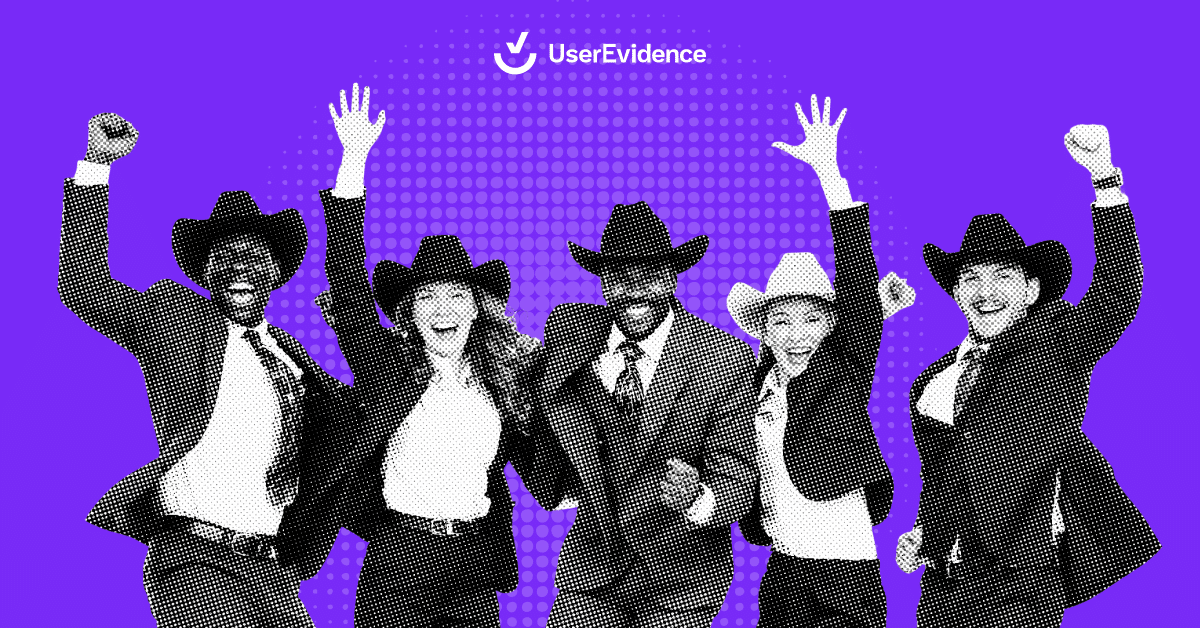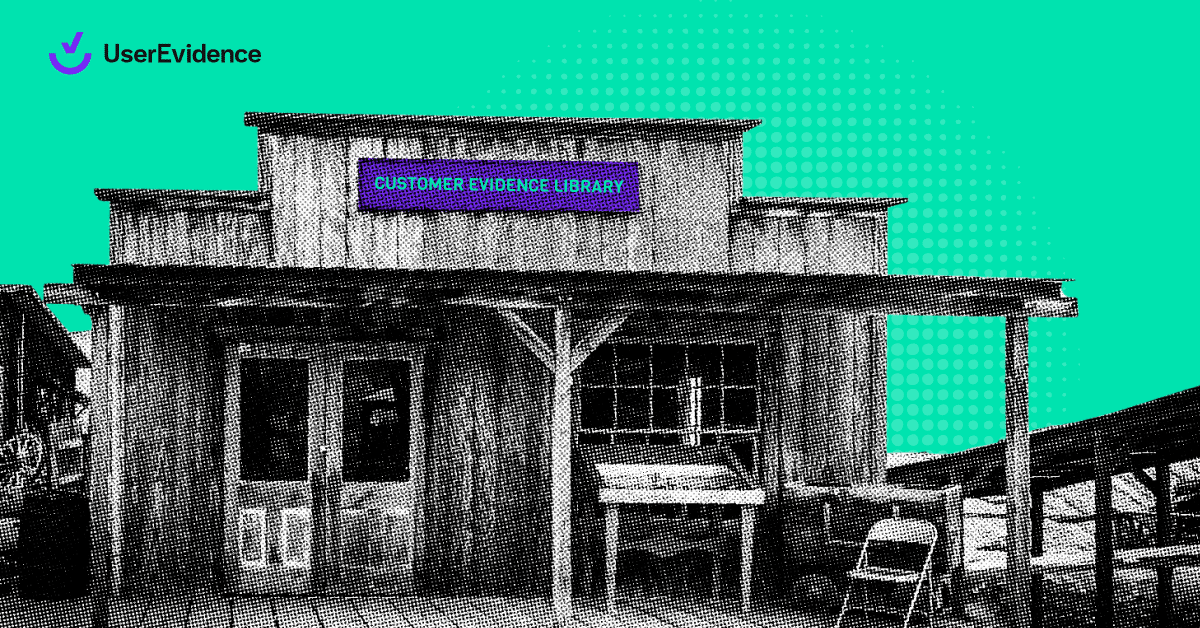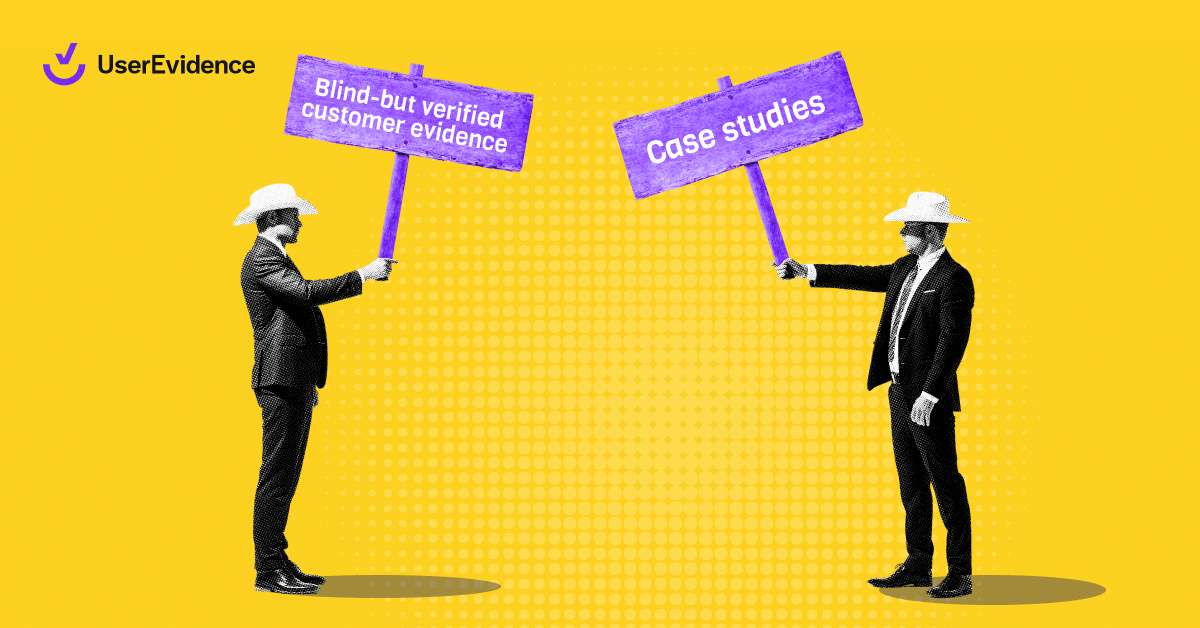A step-by-step playbook from Talya Heller, founder of “Down To A T” product marketing consultancy
I’ve watched too many product marketers create beautiful positioning documents and sales enablement materials that end up collecting digital dust. The slides are polished, the messaging is crisp, but something’s missing—that spark of authenticity that makes prospects lean in and say “tell me more.”
The missing ingredient? Customer proof woven throughout your entire narrative, not just tacked on at the end like an afterthought.
Recently, we sat down with Talya Heller, founder of “Down To A T” product marketing consultancy, to understand her approach to embedding customer evidence into messaging and positioning. What struck me wasn’t just her tactical framework, but her fundamental insight: customer proof isn’t a box to check—it’s a symptom of truly understanding your customers.
Here’s Talya’s step-by-step playbook for making customer evidence the backbone of your messaging strategy and getting your sales team to actually use it.
Step 1: Start with the buying committee, not the product
Most marketers begin with their product features when crafting messaging, but this approach misses a critical reality: you’re not selling to one person. Our research shows the average B2B buying committee includes 5-6 people (though, let’s be real, we’ve definitely seen––or been a part of––deals with 11 or 12 stakeholders). Each person enters the process with different priorities and success metrics. The CFO cares about ROI and risk mitigation, while the end user wants something that makes their daily work easier.
If you’re only collecting generic testimonials about “great results,” you’re missing the nuanced proof each stakeholder needs to feel confident in the decision.
Talya flips the traditional approach entirely by starting with the buying committee, not the product. “The process starts with the ICP and with the customers and understanding them,” she explains. “Customer proof isn’t something I think about as a box to check. It’s something that is truly embedded in the entire process.”
Here’s Talya’s tactical approach for mapping your buying committee:
Before you write a single message or create any enablement content, document:
- What each person cares about and how they’re measured
- Their specific pain points and goals (ideally, in their own words)
- Their role in the decision-making process
- What proof points would resonate with them
“Even when you’re selling one product, one use case, you typically have a few different people in the buying committee,” Talya notes. “It’s really about bringing the customer proof that matters to each of these different people, and it might not be the same thing.”
An example that Talya shared: A business owner and a CTO can both care about adoption, but for different reasons. If we want to tell a compelling story, we need to use that proof in the most specific way possible, rather than counting on our audience to connect the dots. Some of the secondary personas might only give our pitch a few minutes. It’s on us to show them why they should care, not on them.
Step 2: Collect proof that speaks to each persona’s reality
Don’t overlook the goldmine in your existing data. We often see teams rushing to create new surveys when they’re sitting on months of recorded sales calls, support interactions, and customer success touchpoints. Your customer success team is having renewal conversations where customers naturally share outcomes and ROI. Your support team hears pain points daily. Your sales teams may be conducting win/loss interviews.
Start mining these existing touchpoints before you build new collection processes—you’ll be surprised how much targeted evidence is already hiding in plain sight.
Once you’ve mapped your buying committee, Talya recommends starting with what you already have before creating new collection processes. “Usually the easiest place to start is with what you already have,” she advises. “If you’re starting really from scratch, start with what you already have, and then try to supplement it with competitive or market research.”
Talya’s framework for evidence collection:
Start with existing sources:
- Customer calls and recorded conversations
- Existing surveys or customer advisory board feedback
- Support tickets and success stories
- Product usage data and adoption metrics
What you’re looking for:
- Direct quotes about pains, goals, and KPIs
- Specific outcomes and results
- Product usage statistics
- Transition stories (before and after states)
The key is capturing evidence “in their voice that speaks about the things that they care about”—not just generic testimonials, but targeted proof that addresses the specific concerns of each buying committee member.
Step 3: Map proof to personas, pains, and benefits
This mapping step is where customer evidence programs often fail. Teams collect great quotes and stats but never create a system to find the right proof at the right moment. My go-to recommendation when chatting with teams just getting started on scaling evidence is to create filterable tags for industry, role, company size, use case, and outcome type. Your sales team thinks in terms of “I need something for a CFO in financial services worried about implementation time”—not “I need testimonial #47.”
Make your evidence searchable by how your team actually thinks about prospects.
Talya emphasizes that this is where most teams skip ahead to asset creation—but don’t. The mapping exercise is what transforms scattered customer feedback into strategic ammunition.
“The very first thing I do is really to map each of these to persona, to pain, to benefits, to use case, and really tying them all together,” she explains.
Talya’s comprehensive mapping framework connects:
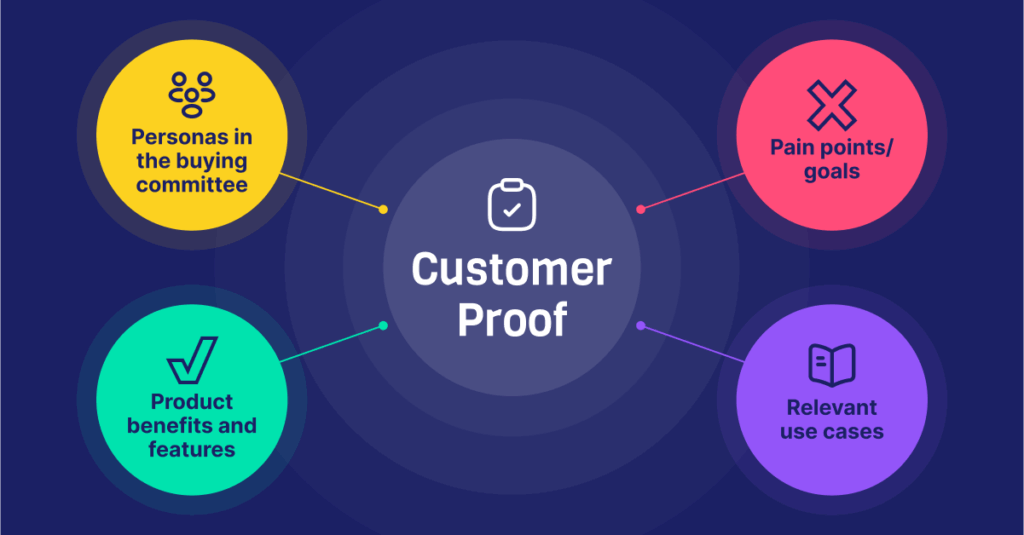
This mapping exercise reveals gaps in your evidence and helps you understand how everything connects. “If you find your differentiators, great, but then you need to tie each of them to which person cares about that, in what use case it even matters.”
Step 4: Sprinkle proof throughout your entire story
The “case study slide dump” approach is one of the biggest mistakes I see teams make. When you save all your customer evidence for the end of a presentation, you’re essentially asking prospects to trust you for 30 minutes before proving you’re worth that trust. Instead, lead with proof. Open with a customer quote that captures the pain you’re solving. Use adoption stats to validate each feature claim as you make it.
This approach transforms your entire pitch from “trust me” to “don’t take my word for it—here’s what our customers say.”
Talya’s approach mirrors this.

"Instead of just thinking about customer proof as just a case study, whether it's on your website or in a slide, I like to sprinkle them throughout everything. Every piece or asset that I'm creating is going to have a little bit of that, because I just know it's going to make it so much more compelling."
Another way to think about it: Any differentiator should have customer proof to back it up. Quotes, stats, results. And the more, the better.
Once we build it into our narrative, using it throughout becomes natural. When you set up proof t, there’s almost no way to opt for the default one of three approved case study slides that 99% of sales decks have
Talya’s tactical examples of sprinkling proof:
- Pain-point messaging: Use customer quotes that describe their challenges in their own words as opening statements
- Feature explanations: Back each feature with adoption metrics or usage statistics
- Benefit statements: Include specific outcomes achieved by real customers
- Objection handling: Counter concerns with targeted proof points from similar situations
“It’s about how it plays along the entire story and you know, we tie it to all the places where this is going to be relevant.”
Talya shared this example of a portion of a persona-based one-pager with me. Note a few small, personal details that really make this resonate immediately with specific personas:
- The headline was inspired by a direct quote from that persona
- The story refers to their daily life, and where it intersects with the product
- The stat on the left came from market research––having that data to anchor on adds tons of credibility
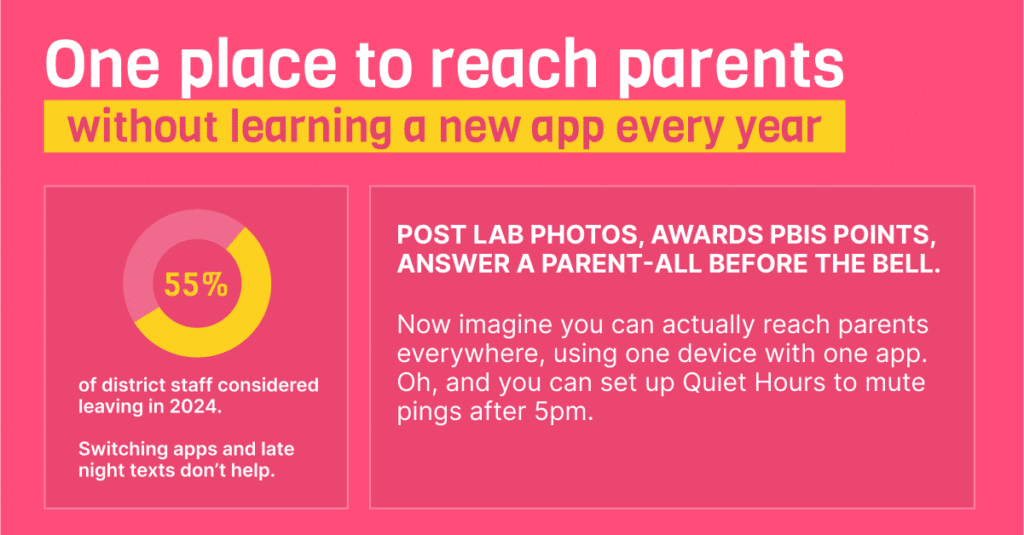
Step 5: Create compelling before-and-after narratives
The before-and-after structure is marketing psychology 101, but most teams miss the emotional power of the “before” state. Your prospects are living in pain right now—show them they’re not alone. When you lead with a customer quote that perfectly captures their current frustration, you immediately build credibility and connection. The “after” state then becomes aspirational rather than boastful.
It’s the difference between “look how great we are” and “here’s where you could be.”
Talya uses one of her most powerful techniques: structuring customer proof to show clear transformation stories rather than just positive outcomes.
(This was one of my favorite takeaways from this conversation, by the way.)
“I like to set them in a before-and-after format. I’ll have quotes that speak to their pains on one side of the slide, and then quite literally on the other side, it’s going to be quotes that speak about the after. When you see them side by side, it’s just so much more compelling.”
Why Talya’s before-and-after approach works:
- Prospects see themselves in the “before” state
- The contrast creates emotional resonance
- It tells a complete transformation story
- It moves beyond features to outcomes
This approach transforms customer evidence from generic social proof into compelling storytelling that guides prospects through their own journey.
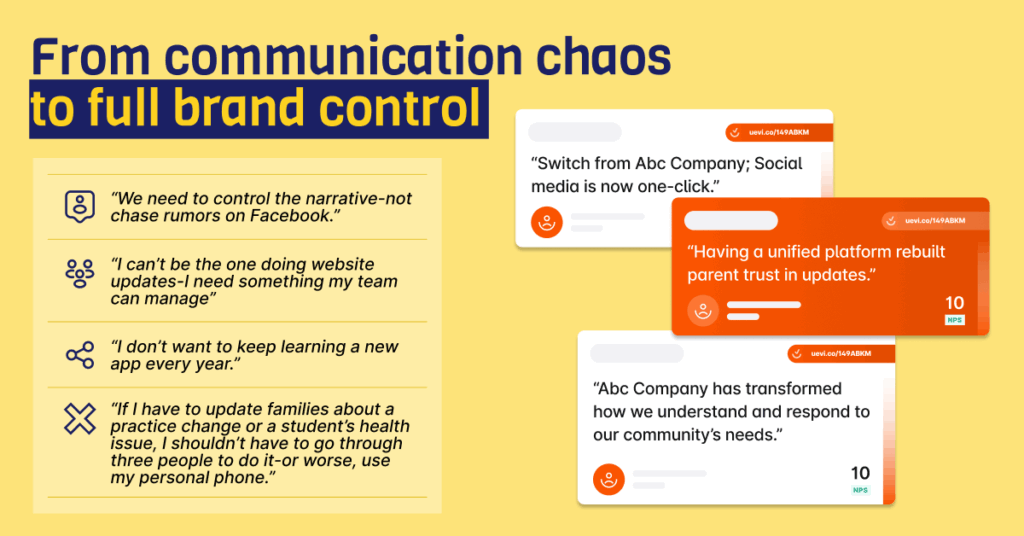
Step 6: Tailor the same proof for different audiences
This is where most customer evidence programs plateau. Teams collect great proof but use it generically across all audiences. The magic happens when you translate the same data point through different lenses. That “87% adoption rate” stat becomes risk mitigation for finance, usability validation for end users, and deployment ease for IT.
Create messaging variants for each persona so your sales team doesn’t have to figure out the translation on their own—they’ll be more likely to actually use your evidence when the hard work is already done for them.
Here’s where Talya’s buying committee mapping pays off. The same piece of customer evidence can be positioned differently for different decision-makers.
Talya gives a perfect example with retention and adoption metrics:
For the CFO: High adoption rates mean “this investment is low risk” because you’re not spending money on shelf-ware that won’t get used.
For the end user: High adoption rates mean “the product is good, it works, it’s going to make my job easier.”
For the IT decision-maker: High adoption rates might mean “this won’t create support headaches” or “implementation will be smooth.”
“It can be the same stat. But it’s just how do you tell that story?”
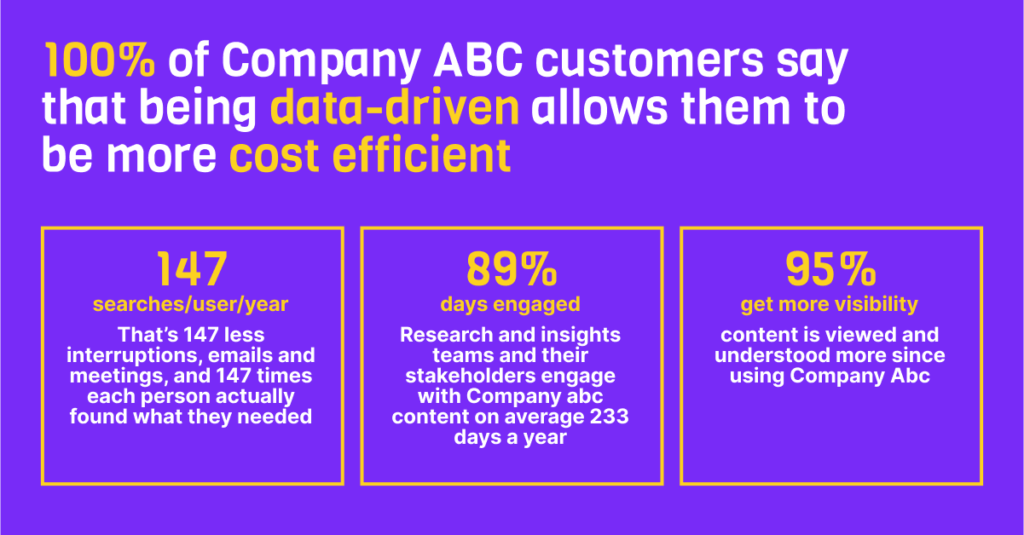
Step 7: Make it believable to your own team first
This is the internal marketing challenge that most PMMs overlook. You’re not just selling to prospects—you’re selling to your own sales team first. If your reps don’t believe your messaging is credible and compelling, they’ll default to their own version (which usually lacks the customer proof that makes it convincing).
Treat your sales team like an internal customer: show them the evidence behind every claim, explain the context, and demonstrate how it’s helped other reps close deals. When they trust your materials, they become advocates for your messaging instead of creating their own versions.
This might be the most overlooked aspect of customer proof strategy, according to Talya (and, for what it’s worth, mirrors my own experience as well). Your sales team needs to believe in the evidence before they’ll effectively use it with prospects.
Talya’s approach to building internal credibility:
- Connect every claim to specific customer evidence
- Show the complete story, not just cherry-picked highlights
- Make the evidence easily accessible and searchable
- Provide context on when and how to use each piece of proof
When your sales team sees customer evidence woven throughout your positioning and messaging, they’re more likely to trust and use your materials.
Step 8: Embed proof in all your sales assets
The asset integration step is where you move from “customer evidence program” to “customer evidence culture.” When your battle cards include customer quotes about competitive differentiation, your discovery decks lead with pain-point testimonials, and your email templates naturally include relevant outcomes, you’ve made customer proof the default rather than an add-on.
This is also where you can start measuring impact—track which assets with embedded evidence perform better than their proof-free counterparts. You’ll quickly see that evidence-backed assets consistently outperform generic ones.
Talya emphasizes not limiting customer evidence to dedicated case study slides, but integrating it across your entire sales toolkit:
Talya’s asset integration framework:
Sales decks: Include relevant quotes and metrics throughout the presentation flow, not just at the end
Battle cards: Back competitive advantages with specific customer outcomes
Discovery frameworks: Use customer pain quotes to guide conversation starters
Objection handling scripts: Pair each common objection with targeted proof points
Email templates: Include relevant statistics and outcomes in outreach sequences
“When you connect all these things and you really sprinkle all of these things in all the assets that you’re working on—even in messaging documents, competitive enablement—it makes the entire thing a lot more believable.”
Tip from Talya:
Customer insights can and should feed positioning and messaging. It’s where we can see if new trends or pain points emerge, if our positioning resonates (there’s nothing better than hearing a prospect using your own language on a sales call), and where we can stress test our differentiators over time.
Step 9: Train your team on the “why” and “when”
Training is where most customer evidence programs stall out. You can’t just dump a library of testimonials on your sales team and expect them to figure out the best usage on their own. Create simple frameworks: “Use this ROI stat when talking to finance personas worried about budget.” “Deploy this implementation quote when prospects raise timeline concerns.” And, make sure they understand where to easily access persona-specific assets. With that ammo at their disposal right out of the gate, they’ll adopt fast (and become your biggest fans).
Even better, record your top performers using customer evidence effectively and share those examples. Nothing beats hearing a successful rep naturally weave proof into their pitch—it makes the approach feel authentic rather than scripted.
Asset creation is only half the battle according to Talya. Your sales team needs to understand not just what customer evidence you have, but when and how to deploy it effectively.
Here’s what you need to train sales on new customer evidence:
- The story behind each piece of evidence
- When to use specific proof points in the sales cycle
- How to customize evidence for different industries, use cases, or buying committee personas
- Ways to naturally weave proof into conversations
“Once you kind of lift the constraint of ‘I need a customer who’s willing to go on the record,’ and you have almost agile ways to collect that information, you manage to get a much bigger pool of quotes, stats, and opinions from lots of different industries and roles.”
Step 10: Create a feedback loop for continuous improvement
The feedback loop is what separates mature customer evidence programs from one-and-done projects. Set up quarterly reviews with your sales team to understand which pieces of evidence are actually moving deals forward. Track usage patterns—are certain testimonials being used repeatedly while others are ignored? More importantly, establish a process for capturing new evidence as your product evolves and customer outcomes mature.
The best customer evidence programs become self-reinforcing: success stories from this quarter become proof points for next quarter’s deals, creating a virtuous cycle of evidence-driven growth.
Talya reminds her clients often that they need to sell the solution internally just as much as they do externally. Here’s what her check-in structure looks like:
Establish regular check-ins to understand:
- Which pieces of evidence are most effective in closing deals
- What proof points are missing for specific industries or use cases
- How prospects are responding to different types of evidence
- What new customer outcomes or results should be captured
The bigger picture: From evidence to advocacy
When done right, this approach transforms customer evidence from a marketing afterthought into a strategic advantage. You’re not just proving your product works—you’re demonstrating that you understand your customers deeply enough to speak their language and address their real concerns.
The most successful teams use this framework to move beyond the traditional “we need more case studies” request to a more sophisticated customer evidence strategy that serves every part of the sales process.
Remember, customer evidence isn’t just about proving ROI at the end of your pitch. It’s about making your entire story more compelling, believable, and relevant to each person who needs to say “yes” to your solution.
As Talya puts it: “If we’re selling to mid-market or enterprise, we have to tell that story to the entire buying committee, not just to the one person who has to buy your product. And we have to be a little creative sometimes in the way that we use what we have.”
Ready to implement your own customer evidence strategy? Mosey on over to the Demo Ranch to take UserEvidence’s customer evidence, advocacy, and references platform for a no-strings-attached spin.

